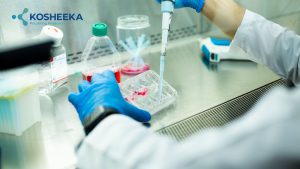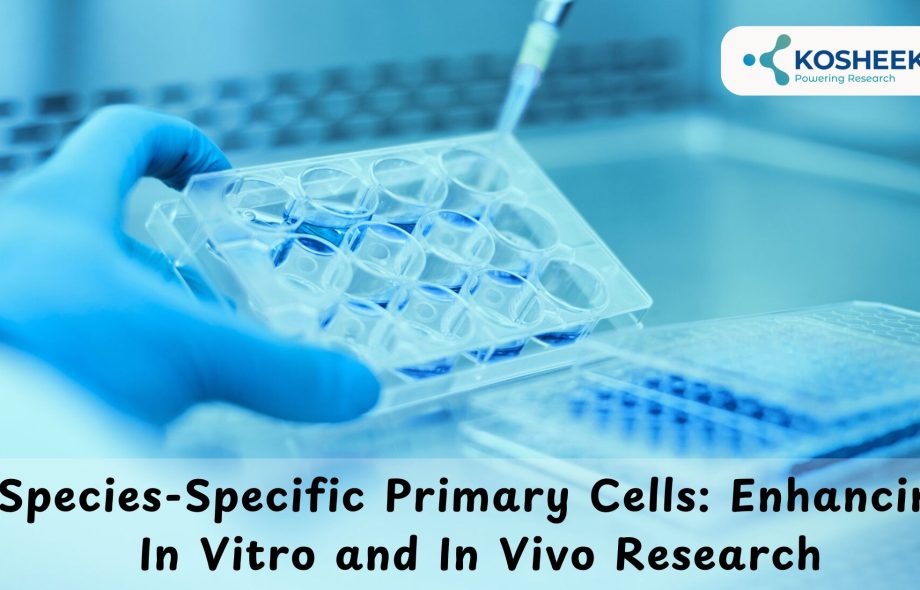Primary cells are the backbone of biomedical research. Species-specific primary cells have acquired focus from the scientific community owing to the use of animal models. They have accelerated the pace of research and provided valuable information. Their applications in diverse fields range from basic research to drug development. When comparing primary cells vs cell lines in species-specific in vitro culture, both types serve a distinct purpose. Researchers use them as per their study goals. This blog highlights the significance of species-specific cells and their applications.
What are Primary cells?
The formulation of culture medium and the establishment of a tightly controlled environment have facilitated the Primary Cell Culture. Their value arises from tissue-specific characteristics. It translates into cellular mechanisms and responses similar to that of a tissue.
However, their limited proliferation in the in vivo laboratory conditions makes their culture challenging. Immortalized lines counterbalance this drawback but cannot express the exact features of tissue. Therefore, despite the challenges, primary cell culture has become quite common in the lab. The development of animal models has also introduced the concept of species-specific in vitro culture. These include cell isolation from diverse species, including humans, rodents, dogs, pigs, etc.

Why use Species-Specific Primary Cells?
Human-derived primary cell culture has been the intended centre of biomedical research. However, several factors have led to the use of cells from other species:
- Availability: Cells directly derived from the tissue reduces the accessibility to human tissue-derived cell population. On the other hand, animals are easily bred with short reproduction times, serving as abundant sources of tissue-specific cultures. They also enable repetitive isolation under ethical guidelines which has constraints in humans.
- Animal Models: The inability to experiment on humans has encouraged the use of animal models in the beginning. Now, animal models have advanced tremendously. The inbred strains lower the population-based variability. Furthermore, cells from genetically engineered and disease-based animal models boost research on particular genes and diseases.
- In Vivo Translation: Typically, every in vitro study proceeds with its analysis in the in vivo models. The in vivo reproducibility depends on the design of in vitro study and the cell type used. Research on cells from particular species considerably enhances the reproducibility of in vitro observations in the in vivo studies.
- Clinical Research: Regulatory authorities have mandated the evaluation of a new drug or treatment on at least two animal models (rodents and non-rodent). It has encouraged the use of cell population corresponding to the animal models.
- Financial Burden: Human tissue-derived cells are more difficult to procure that elevates their cost. In comparison, cell cultures from other species are more cost-efficient.
Limitations
Cells from other species have been used due to the genetic similarities between humans and particular species. However, species-specific differences still exist and cast doubts on translation potential of such studies. Several such differences have been studied. For instance, embryonic development has temporal differences in mice and humans. Recent research also revealed varied regulation of development between both species. Several mechanisms, such as aging, immune responses, brain development, etc., differ across species with respect to molecules and signaling pathways involved. However, finding the silver lining, scientists are now utilizing these differences to study evolutionarily conserved and modified pathways.
Primary Cells vs Cell Lines
The dilemma between Primary Cells Versus Cell Lines has existed for years. The choice is simple when the cells for a particular tissue or species are not available or are difficult to sustain in the in vitro conditions. In such cases, immortal lines serve as the closest and most suitable in vitro models. Moreover, the objective of the study is a key factor in decision-making. If the in vitro research has a future possibility of in vivo application, then primary cell type would be a more adequate choice.
Conclusion
Introduction of diverse in vivo models have led to the cell isolation and cultivation from different species and strains. They are essentially due to their higher availability and to increase in vivo reproducibility. However, species-based differences should be kept in mind before clinical research. Although human tissue cells should be prioritized, animal cell population could be used if the former are unavailable or cannot be cultured.
The decision of primary cells vs cell lines depends largely on cell availability and future goals. Nonetheless, primary cell culture from humans and animals have equally contributed to the current understanding of the biological mechanisms. With the ongoing research, they will lead to the development of new therapeutics. Kosheeka delivers species-specific primary cells from different tissues along with detailed documentation of the donor to elevate the scientific pursuit.
 :
https://in.pinterest.com/kosheeka
:
https://in.pinterest.com/kosheeka

